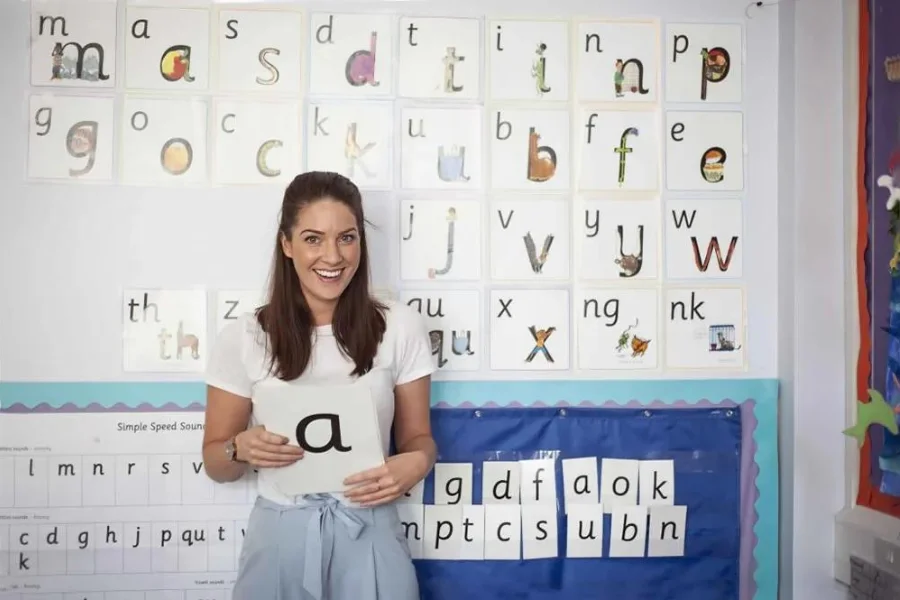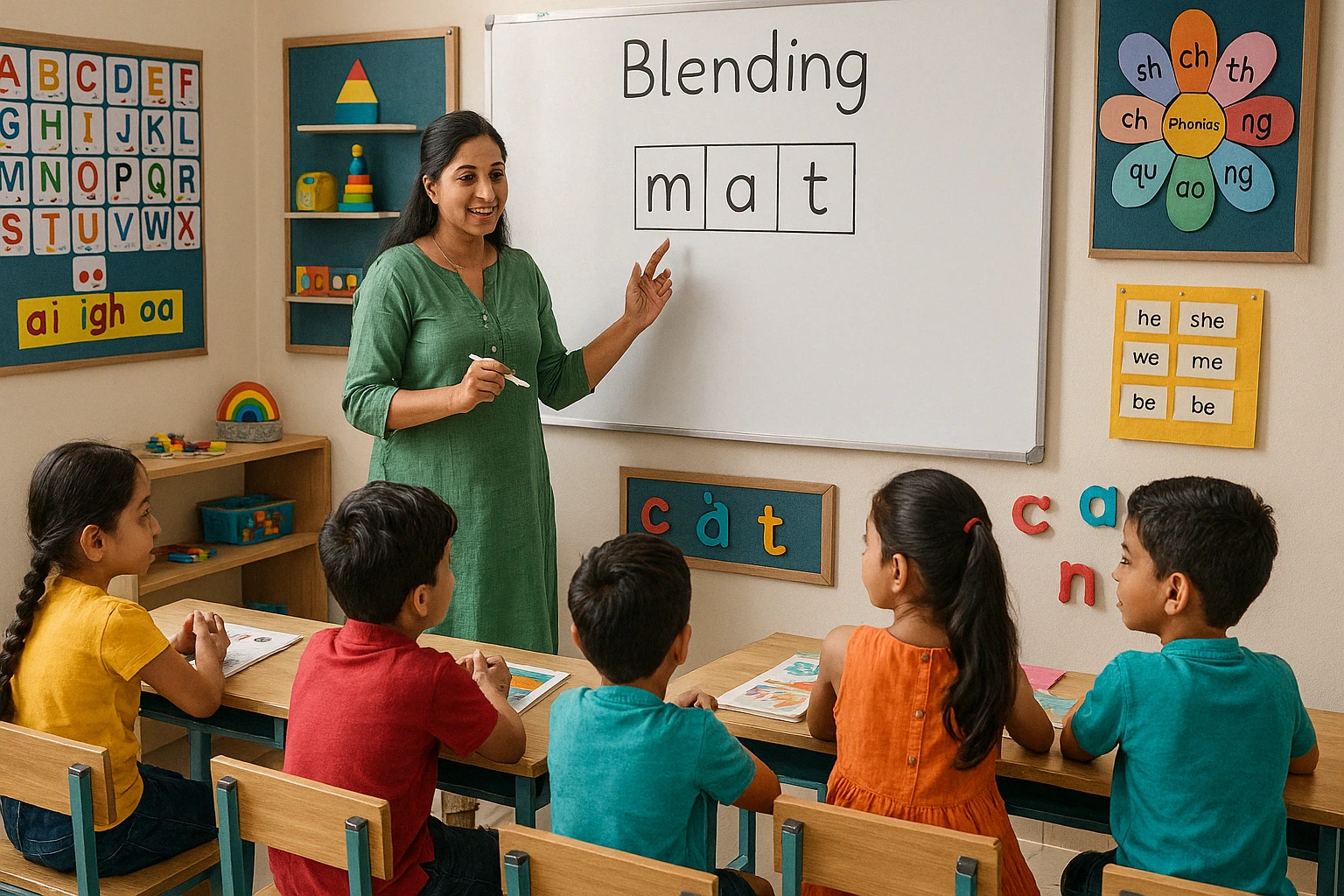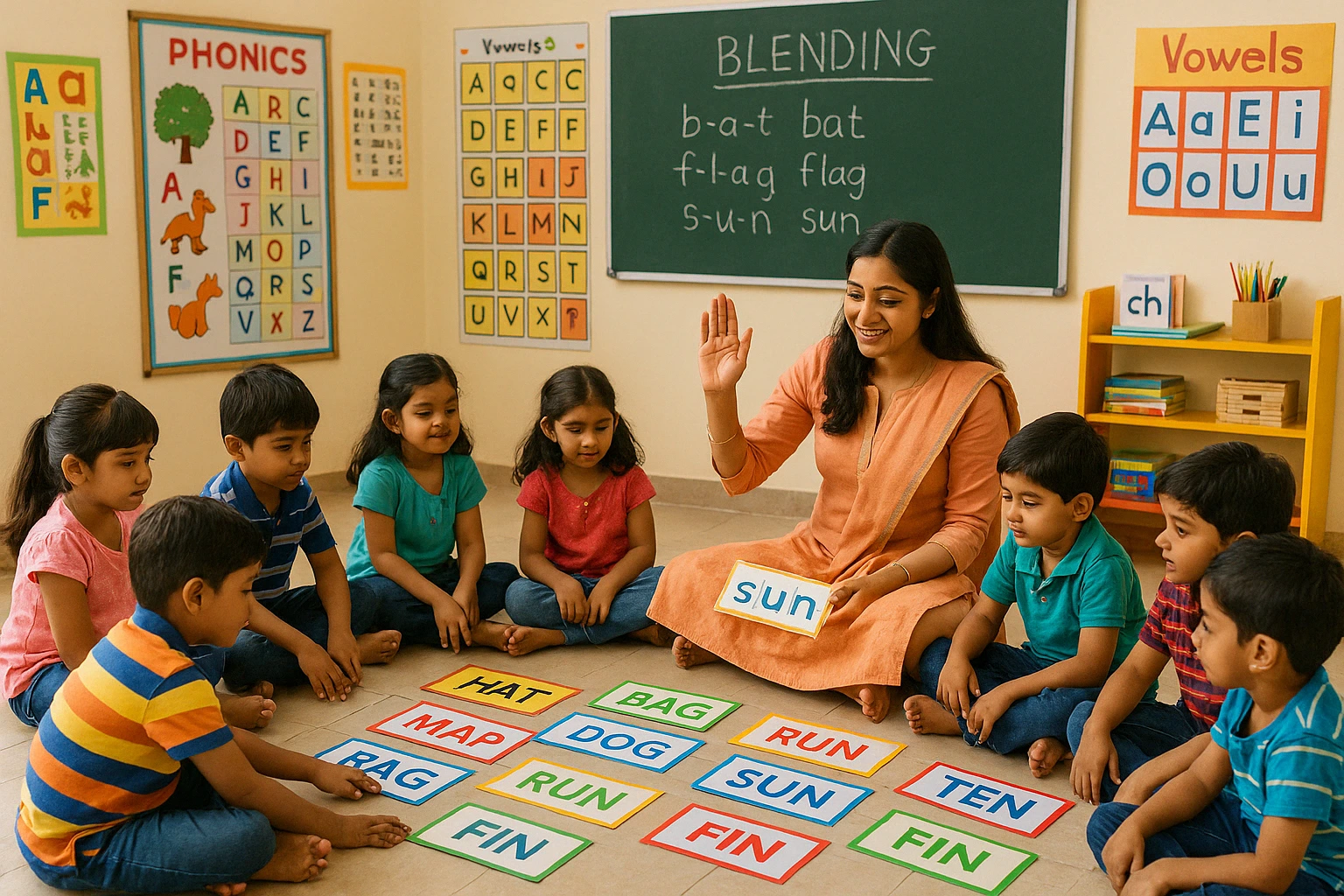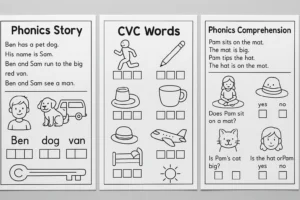
Source: ruthmiskin
Learning to read can be an elating journey for young children, and two essential tools that help build adept reading skills are Phonics and Blending Words. It focuses on identifying letter sounds, understanding their order, and practicing combining them to form words. When children understand Phonics and Blending Words, they become more confident with speech sounds, their formation, and their role in communication, thus laying the foundation for further linguistic advancement.
What is the Blending Skill in Phonics?
Phonics and Blending Words help children decipher words effortlessly. Blending involves merging individual letter sounds to form a whole word. Understanding Phonics and Blending Words is essential for early readers as it builds the ability to interpret unknown words independently.
Here’s how Blending Skill in Phonics supports learning:
Sounding out each letter or letter group
For instance, in the word mug, a child says the sounds /m/, /u/, and /g/.
Pushing the sounds together
The child then brings the sounds together to say the word cat as a whole.
Practicing regularly
Regular practice helps children move from slow, assisted blending to fluent reading.
What are Examples of Blending Words?
Blending words involves bringing together respective sounds to interpret a complete word. This skill helps children split down unknown words and build confidence as they learn to read. Starting with simple three-letter words and step-by-step moving to more intricate ones is a common approach in phonics.
Here are Examples of Blending Words:
CVC (Consonant-Vowel-Consonant) words
- cat → /k/ /a/ /t/
- dog → /d/ /o/ /g/
- sun → /s/ /u/ /n/
Words with blends at the beginning
- flag → /f/ /l/ /a/ /g/
- trap → /t/ /r/ /a/ /p/
- clip → /c/ /l/ /i/ /p/
Words with blends at the end
- fast → /f/ /a/ /s/ /t/
- help → /h/ /e/ /l/ /p/
- jump → /j/ /u/ /m/ /p/
Words with digraphs (two letters making one sound)
- ship → /sh/ /i/ /p/
- chop → /ch/ /o/ /p/
- thick → /th/ /i/ /ck/
Practicing these types of words helps children develop smooth and accurate reading habits. Repetition of Phonics and Blending Words also amplifies their knowledge of how letters and sounds work jointly.

Image made by using AI
Why do Students Struggle with Blending?
Phonics and Blending Words is an exceptional mastery in early reading that may not be easily achieved by every student. Some may pick it up quickly, others may need more time and attention. Knowing why Students Struggle with Blending can help educators and parents to adapt teaching approaches for positive outcomes.
Let us see Why do Students Struggle with Blending:
Problem listening to distinct sounds
Some children find it a task to determine the different sounds within a word, which makes blending challenging.
Poor phonemic awareness
- Blending relies on the ability to hear, think, and alter sounds in spoken words.
- Poor phonemic awareness can make blending puzzling.
Learning pace
Some students need more time to comprehend the individual sounds before they can combine them smoothly.
Memory challenges
- Blending requires remembering each sound and holding it in sequence to say the full word.
- For some children, this can be a lot to pull off at once.
Lack of consistent practice
- Like any skill, blending gets better with repetition.
- Adequate practice through integrated reading activities is the key to gaining proficiency.
Ill-defined pronunciation or speech issues
Struggling with enunciating specific sounds can make it tough for students to blend them together accurately.
Patient teaching, targeted practice, and encouragement help most students get over these struggles and become confident readers.

Image made by using AI
How to Teach Blending Words?
Mastering Blending Words helps children evolve into confident readers. It involves guiding them to associate individual letter sounds effortlessly to form complete words. Students can develop adept reading skills from an early age with the right approach and consistent practice.
Teach Blending Words using the following innovative ways:
Start with simple CVC words
- Start teaching the blending of simple consonant-vowel-consonant words.
- Say each sound slowly and clearly, then blend them together.
Use sound boxes or counters
- Let children place a counter or marker for each sound they hear.
- Then, they slide them together and blend the sounds into a word.
Model blending aloud
- Teachers should demonstrate how to blend sounds.
- For example, say /m/…/a/…/t/ and then say “mat.” Repeating this helps students grasp the process.
Use visual aids and flashcards
Colorful visuals and flashcards with simple words encourage engagement and help children connect sounds with letters.
Incorporate games and interactive activities
Turn Phonics and Blending Words practice into a game—like word-building puzzles or matching sounds with pictures—to keep learning fun.
Practice regularly
- Consistent short sessions are more effective than long, infrequent lessons.
- Repetition builds fluency.
For those wishing to guide young learners effectively, Vidhyanidhi Education Society (Govt. Regd.) offers a Phonics Teacher Training Course that equips educators with established approaches for teaching Phonics and Blending Words. The Phonics Teacher Training Course includes hands-on techniques, activities, and means to aid early reading advancement. By pursuing the Phonics Teacher Training Course, educators can acquire adept skills and confidence to teach Phonics and Blending Words and make reading a rewarding experience for children!
Join Vidhyanidhi Education Society’s Phonics Teacher Course and make learning fun for kids!
For more details of Phonics Teacher Course Call / Whatsapp +919869866277/+919869546913
To Download Brochure of Phonics Teacher Course, Click Here!
FAQs
When can a Child Start Blending Words?
Most children can start blending words around age 4–5, after they’ve learned basic letter sounds and can hear and say them clearly.
Which Blend to Teach First?
Begin with easy beginning blends like bl, cl, st, and tr as young learners can effortlessly hear, say, and recognize them in words.
Is Blending a Phonics Skill?
Yes, blending is a key phonics skill that helps children combine individual sounds to read full words. Vidhyanidhi Education Society trains teachers in this skill.



